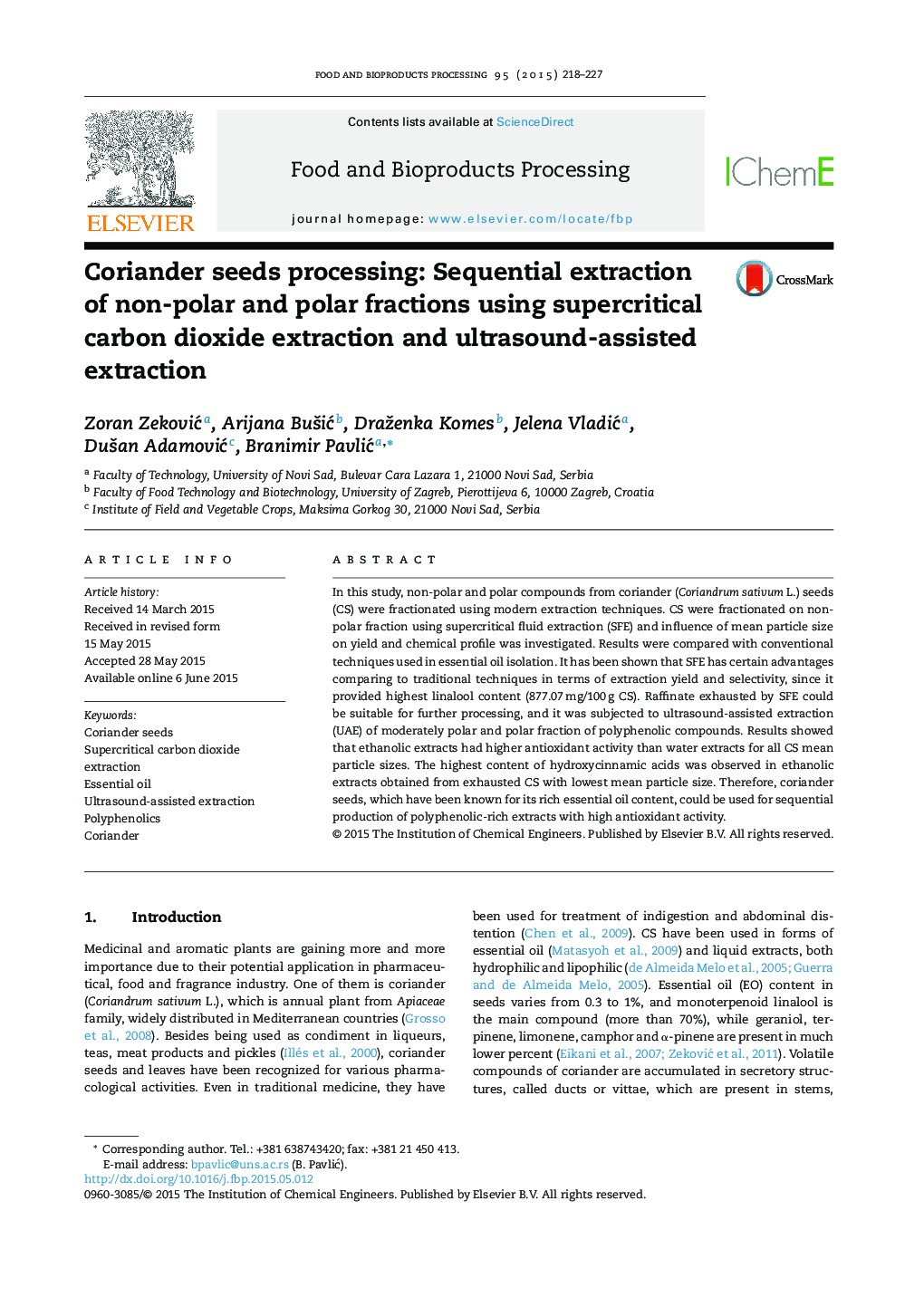| Article ID | Journal | Published Year | Pages | File Type |
|---|---|---|---|---|
| 19020 | Food and Bioproducts Processing | 2015 | 10 Pages |
•Possibilities of modern extraction procedures in coriander seeds processing.•Supercritical fluid extraction of essential oil-rich fraction.•Utilization of exhausted sample after SFE in ultrasound-assisted extraction.•Sequential UAE of moderately polar and polar polyphenolic-rich fraction.
In this study, non-polar and polar compounds from coriander (Coriandrum sativum L.) seeds (CS) were fractionated using modern extraction techniques. CS were fractionated on non-polar fraction using supercritical fluid extraction (SFE) and influence of mean particle size on yield and chemical profile was investigated. Results were compared with conventional techniques used in essential oil isolation. It has been shown that SFE has certain advantages comparing to traditional techniques in terms of extraction yield and selectivity, since it provided highest linalool content (877.07 mg/100 g CS). Raffinate exhausted by SFE could be suitable for further processing, and it was subjected to ultrasound-assisted extraction (UAE) of moderately polar and polar fraction of polyphenolic compounds. Results showed that ethanolic extracts had higher antioxidant activity than water extracts for all CS mean particle sizes. The highest content of hydroxycinnamic acids was observed in ethanolic extracts obtained from exhausted CS with lowest mean particle size. Therefore, coriander seeds, which have been known for its rich essential oil content, could be used for sequential production of polyphenolic-rich extracts with high antioxidant activity.
Graphical abstractFigure optionsDownload full-size imageDownload high-quality image (102 K)Download as PowerPoint slide
